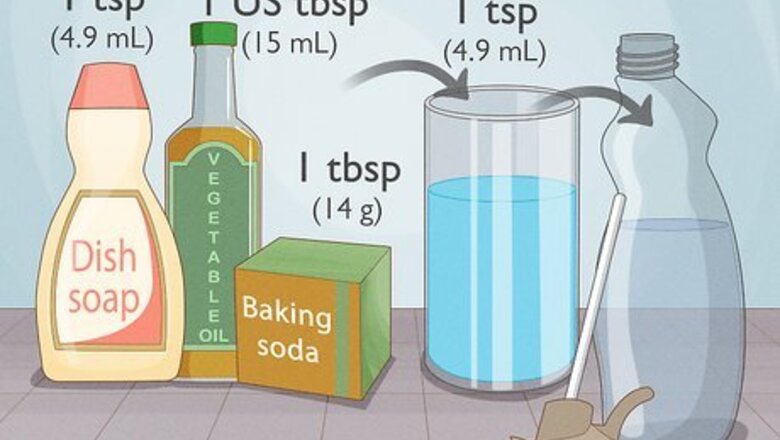
views
Making Homemade Fungicidal Sprays
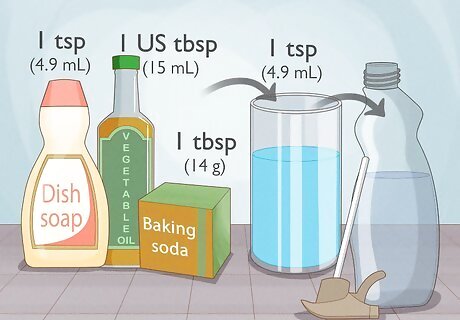
Try baking soda with vegetable oil and dish soap in water. Baking soda is a classic organic fungicidal ingredient. For it to be effective on plants, it needs an oil and a detergent to help it stick to leaves. Mix 1 tablespoon (14 g) of baking soda with 1 US tbsp (15 mL) of vegetable oil and 1 tsp (4.9 mL) of dish soap into 1 US gal (3.8 L) of water. Stir the ingredients so they are mixed, and transfer the solution into a clean, empty spray bottle. You can also use an oil-based soap, such as Murphy’s oil soap, instead of separate oil and soap ingredients. Simply use 2 tablespoons (30 mL) of oil soap with 4 tablespoons (56 g) of baking soda in 1 US gal (3.8 L) of water. Try substituting potassium bicarbonate for baking soda. Potassium bicarbonate can be less harsh and just as effective as sodium bicarbonate (baking soda) on plants.
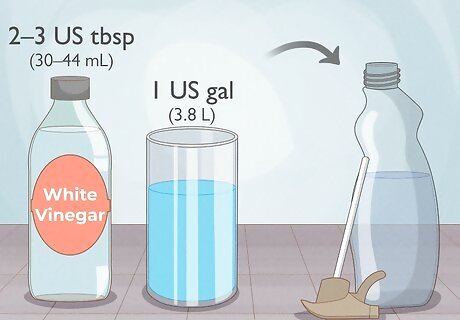
Make a vinegar and water solution. Mix 2–3 US tbsp (30–44 mL) of white or apple cider vinegar into 1 US gal (3.8 L) of water. Pour the solution into a clean, empty spray bottle. Do not use more than the listed amount of vinegar, as too high of a vinegar concentration can burn your plant. Be sure to test this solution on your plant before spraying all of your infected leaves.
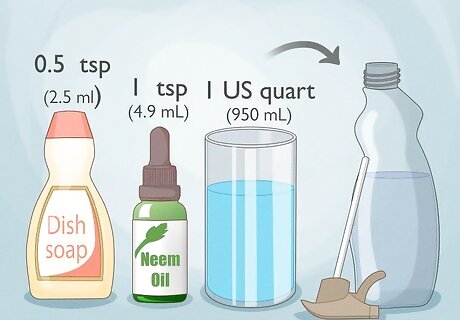
Try a neem oil solution. Neem is a plant whose oil is known for its insecticidal and fungicidal properties. Mix 1 tsp (4.9 mL) of neem oil with .5 tsp (2.5 ml) of dish soap and 1 US quart (950 mL) of water. Pour the solution into a clean, empty spray bottle to use. Neem oil can be found at health food stores, some home improvement stores, as well as online.
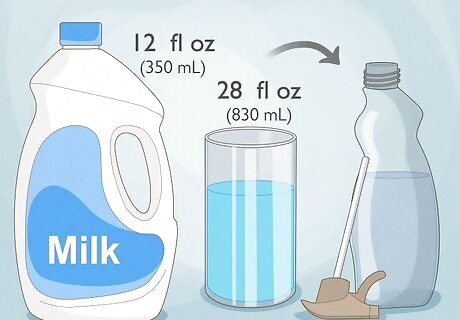
Try a milk and water solution. Surprisingly, milk also has antifungal properties, and has been successful in treating powdery mildew. Try mixing 12 fl oz (350 mL) of milk with 28 fl oz (830 mL) of water and pouring the solution into a clean, empty spray bottle. It doesn’t matter if you use skim or whole milk for this solution, because the protein and not the fat content is what has the fungicidal properties.
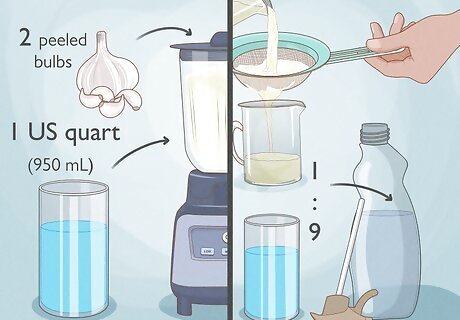
Make a garlic and water solution. Place 2 peeled bulbs of garlic into a blender and add 1 US quart (950 mL) of water. Mix on high for 5-10 minutes. Strain the mixture through a cheesecloth and dilute it for each use by adding 1 part solution to 9 parts water in a spray bottle. Keep the undiluted garlic solution refrigerated in a labeled container until you’re finished using it in sprays.
Using Sprays Correctly
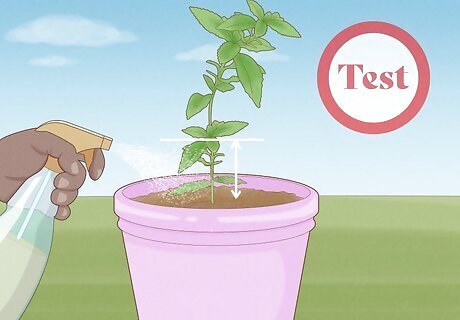
Test each spray on your plant before using it. Occasionally fungicidal sprays can burn and damage your plant leaves. Test each type of spray on a small area of your plant, such as 1 low leaf, before spraying your whole plant. Spray the leaf with enough spray that it runs off the leaf, and allow it to dry. If the leaf begins turning yellow or brown, this spray may be too harsh for this plant. Try different types of sprays on different leaves until you find a couple that work.
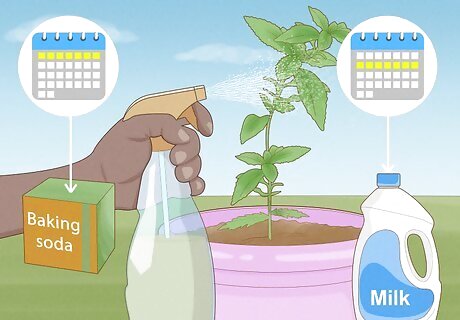
Alternate sprays so the mildew doesn’t build resistance. Mildew can be a stubborn fungus that adapts and builds resistance to things that fight it. When you’ve found a couple sprays that work, alternate them so that the mildew doesn’t build a resistance to any of them. For example, use a baking soda spray 1 week and a milk spray or vinegar spray the next.
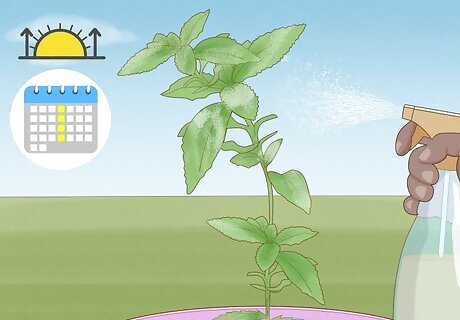
Spray infected plant areas in the morning no more than once per week. When you begin a spray treatment regimen for powdery mildew, you will want to spray your infected plant in the morning to allow the sun to dry the treatment on the leaves. You may often see improvement after 1 treatment. Wait at least a week to apply another spray treatment, and do this only if you do not see improvement on your leaves from the first treatment.
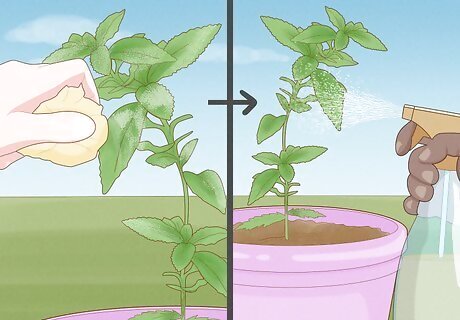
Wipe leaves with a clean cloth to partially remove mildew. Before spraying your infected leaves, wipe them with a clean, dry cloth to get some of the mildew off first. This helps reduce the amount of mildew that runs off into the soil with your spray solution. Alternatively, rub infected leaves against each other to get some of the mildew off.
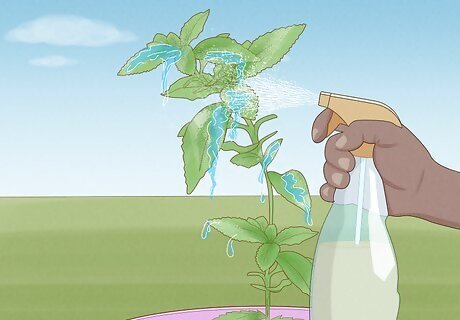
Allow spray to run off the leaves. Each time you use a homemade spray, spray each infected leaf generously enough that the spray starts to run off the leaf. Do not wipe the spray from the leaf, but allow the spray to run off and air dry.
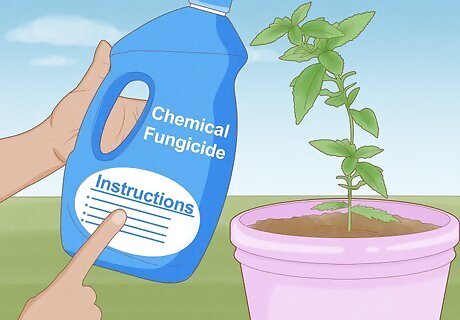
Use chemical fungicides with caution. Chemical fungicides can be effective, but they can cause other problems with your garden as well. They can harm good organisms in the soil, as well as bees and other pollinating insects that are healthy for a thriving garden. They also can affect how safe it is to eat plants they are used on, so be sure to follow all packaging directions carefully if you’re using them on edible plants. Since organic fungicides can be made easily at home, it’s wise to try them first before resorting to chemical treatments.
Controlling and Preventing Powdery Mildew
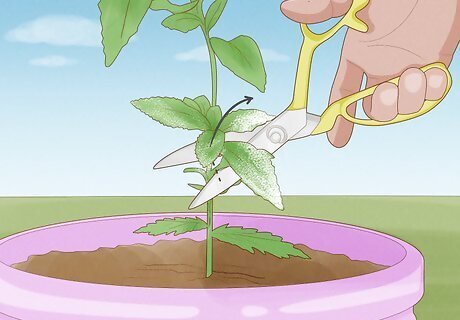
Snip infected lower leaves to reduce spreading mildew. If you catch powdery mildew early on, you can prevent it from spreading by removing the infected leaves with a pair of shears or scissors. Don’t compost the leaves, as the mildew can spread through the compost and back onto other plants. Dispose of infected leaves in your trash so the mildew doesn’t spread. Removing the affected leaves can also help prevent it from spreading to other plants. This is especially important if you're growing leafy greens to eat.
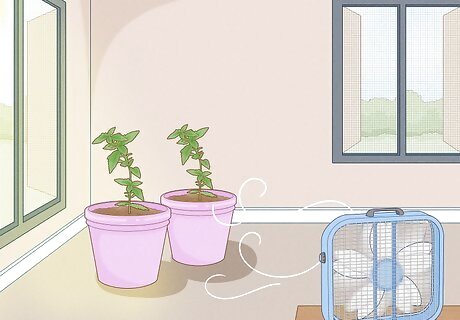
Provide good air circulation for your plants. Powdery mildew thrives in humid weather. Try to plant your garden in a roomy bed that gets exposed to breezes. If possible, blow a fan on your plants on very hot, humid days. Move potted plants into open, outdoor areas in the summer if they are getting mildew inside. The fresh air will help reduce the recurrence of fungi infections.
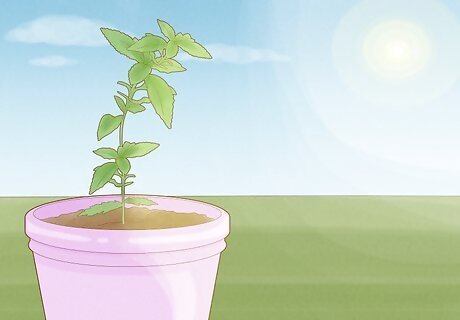
Provide enough sunlight for your plants. Too much shade will make your plant leaves not dry out enough after rain and waterings. The right amount of sun also makes plants stronger and less susceptible to infection. Plant each plant according to its individual sunlight requirements. If you live in an area that is frequently rainy or cloudy, choose plants that thrive in these conditions for your garden.
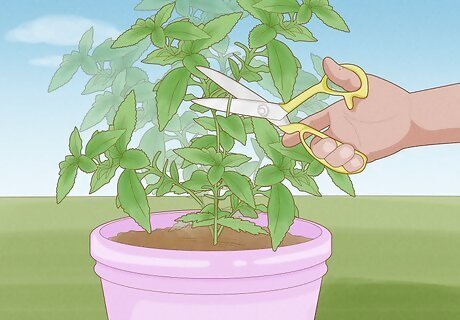
Groom overcrowded plants. Because plants need good air circulation, overcrowded plants are particularly susceptible to powdery mildew. Cut back extra growth on plants that block sunlight from other plants in your garden, and pull plants and leaves that are weak or dying every 2 weeks. If healthy plants seem to be competing for resources, transfer them to bigger pots or garden beds to allow them the air and sunlight they need.
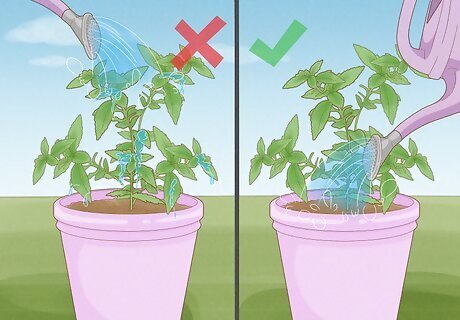
Avoid overhead watering. Allowing moisture to remain on leaves can contribute to powdery mildew. Water your plants close to the base, allowing the water to soak into the soil once before giving it a little more. Don’t water your outdoor plants on rainy days to avoid overwatering them.













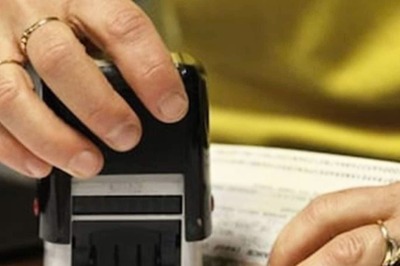




Comments
0 comment